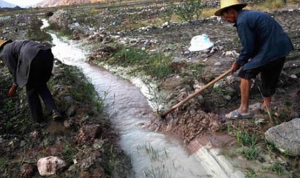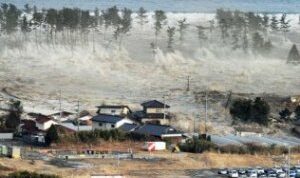 The discovery of more than 100 dead dolphins on Gulf of Mexico shores likely reflects only a small fraction of the total killed by the BP oil spill last year, a study suggested on Wednesday.
The discovery of more than 100 dead dolphins on Gulf of Mexico shores likely reflects only a small fraction of the total killed by the BP oil spill last year, a study suggested on Wednesday.
The actual toll among cetaceans, a group of mammals that includes whales, narwhals and dolphins, may be as much as 50 times higher, said the Canadian and American research team in the journal Conservation Letters.
“The Deepwater oil spill was the largest in US history, however, the recorded impact on wildlife was relatively low, leading to suggestions that the environmental damage of the disaster was actually modest,” said lead author Rob Williams from the University of British Columbia.
“This is because reports have implied that the number of carcasses recovered, 101 (as of November 2010), equals the number of animals killed by the spill.”
Looking back at annual death rates over the past decade, researchers estimate that 4,474 cetaceans died each year from 2003 to 2007, but an average of just 17 carcasses washed up annually on the northern Gulf of Mexico shores.
That indicates an overall carcass recovery rate of 0.4 percent of total estimated mortality among cetaceans in the area. When broken down by species, researchers determined there was a two percent mean recovery rate.
“If, for example, 101 cetacean carcasses were recovered overall, and the deaths were attributed to oiling, the average recovery rate (two percent) would translate to 5,050 carcasses, given the 101 carcasses detected,” said the study.
Previous studies have suggested that dead sea animals that turned up following the Exxon Valdez oil spill off the coast of Alaska in 1989 also represented a small portion of the overall toll.
The National Oceanic and Atmospheric Administration on Sunday updated its figures from what it terms a “cetacean unusual mortality event” to 390 “strandings” — 96 percent of them were “stranded” dead and four percent alive.
The deaths were tracked in the northern Gulf of Mexico from February 1, 2010 to March 27, 2011.
Scientists in Mississippi and Alabama raised new concerns last month after they found 17 baby dolphins washed up dead on the shores in the span of two weeks, more than 10 times the normal rate, in the first birthing season since the BP disaster.
Florida officials have also noted above average numbers of manatee deaths for two years straight, possibly due to cold water temperatures off the waters of the southern state, though the effects of the BP spill could be a contributing factor.
The burly swimmers, sometimes known as sea cows, are not considered in the same group as cetaceans.
The disaster was set off when the Deepwater Horizon, a rig which BP leased to drill at the Macondo well, exploded on April 20, 2010, killing 11 workers and unleashing more than 205 million gallons of oil into the Gulf of Mexico.




